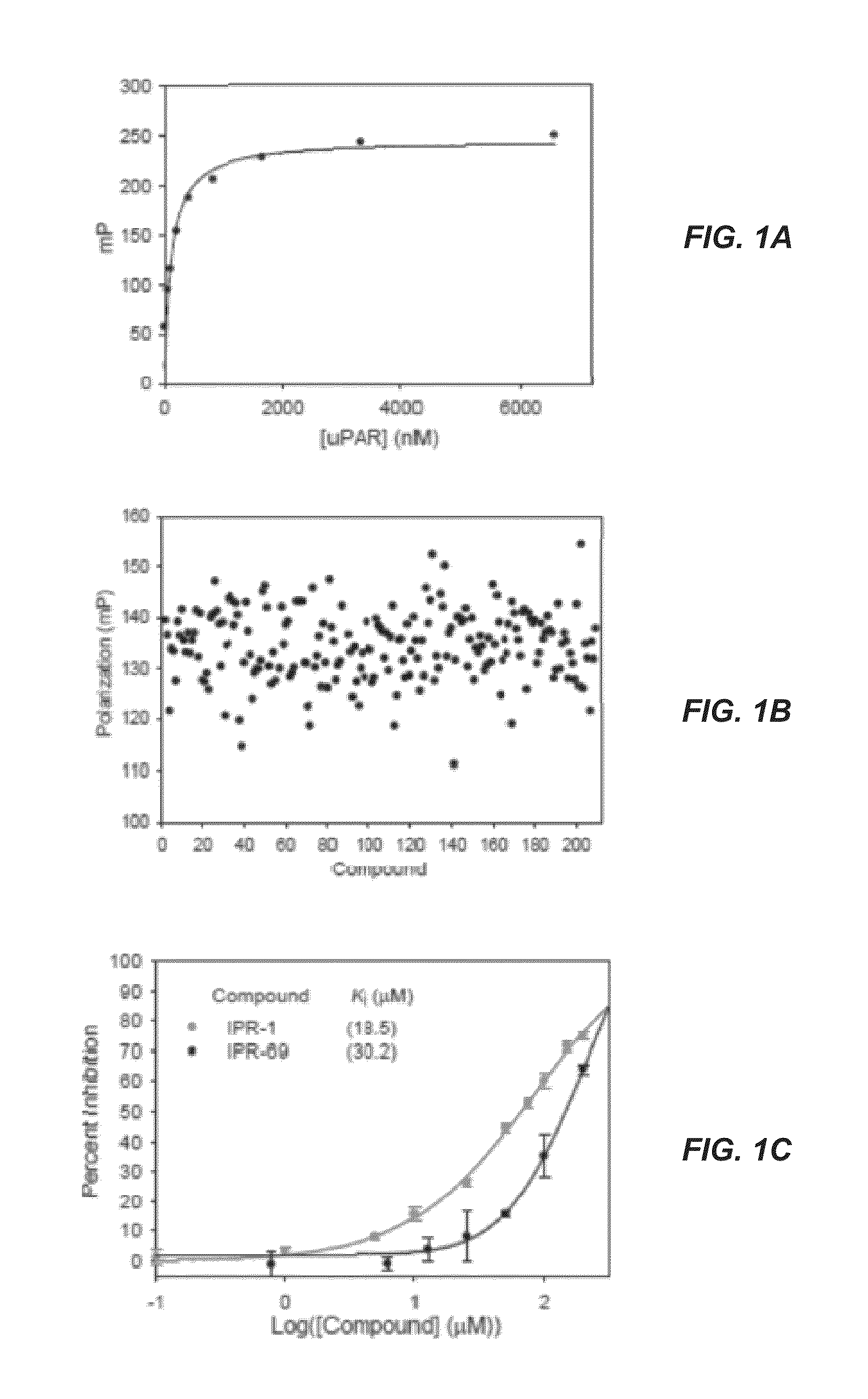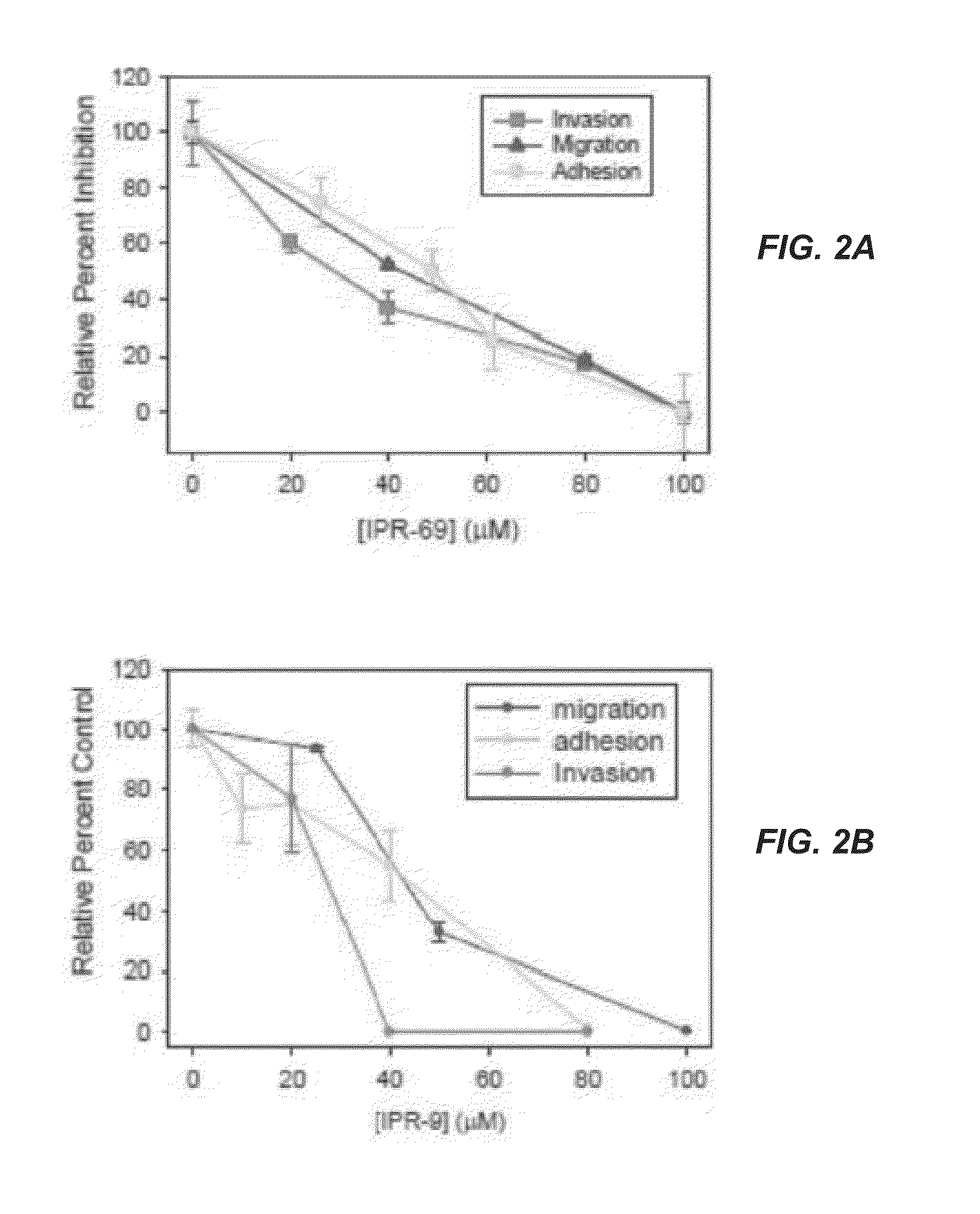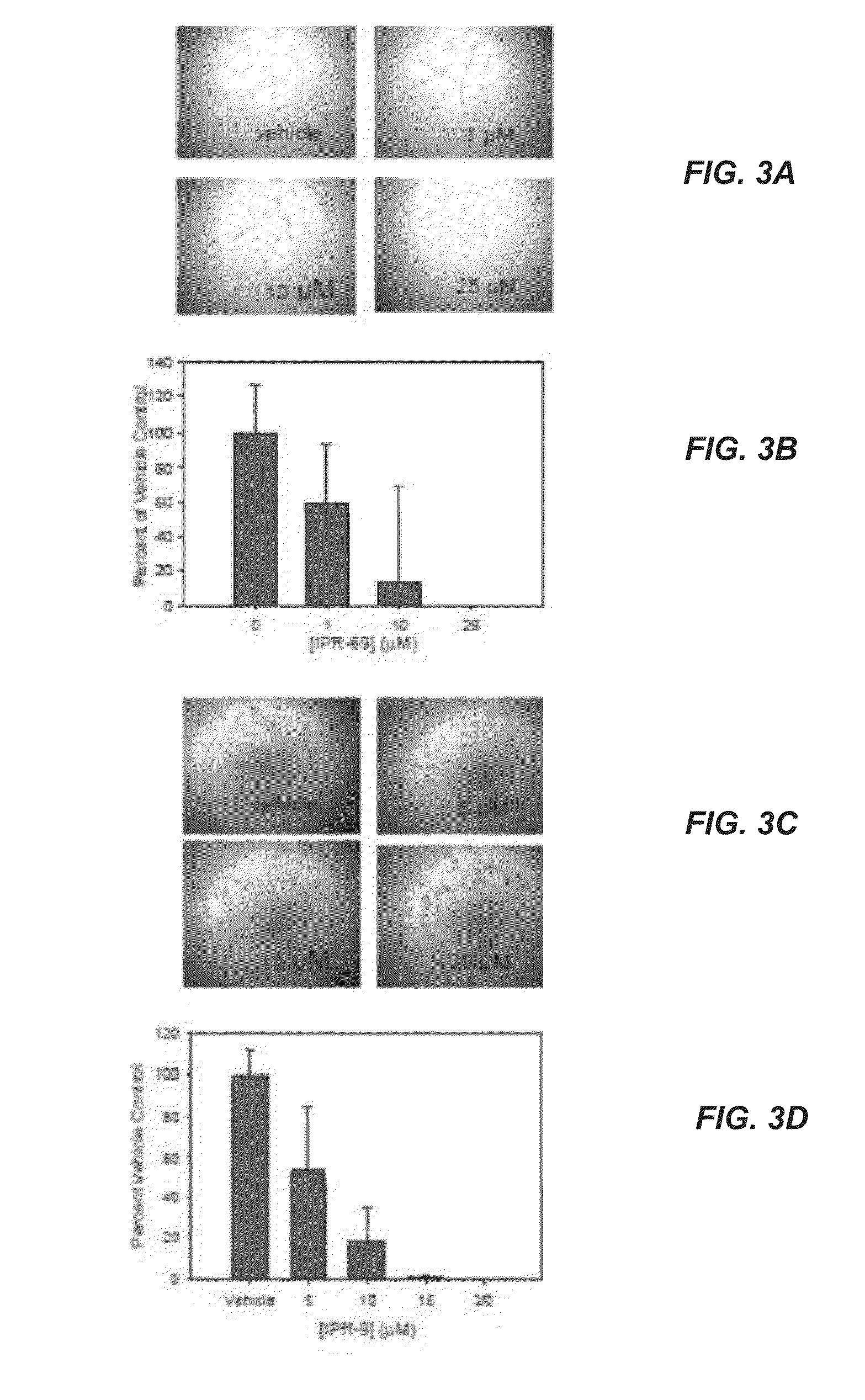Compounds and methods for treating cancer by inhibiting the urokinase receptor
a technology of urokinase receptor and inhibitor, which is applied in the direction of heterocyclic compound active ingredients, drug compositions, biocides, etc., can solve the problems of approximately 90% death in patients, substantially worse survival prospects,
- Summary
- Abstract
- Description
- Claims
- Application Information
AI Technical Summary
Benefits of technology
Problems solved by technology
Method used
Image
Examples
example 1
Summary
[0309]A structure-based computational search of a large commercial library was performed targeting a binding pocket on the urokinase receptor (uPAR). The top ranking candidates identified by this search were tested experimentally for uPAR binding. Two compounds, namely (3R)-4-cyclohexyl-3-(hexahydrobenzo[d][1,3]dioxol-5-yl)-N-((hexahydrobenzo[d][1,3]dioxol-5-yl)methyl)butan-1-aminium (IPR-1) and 4-(4-((3,5-dimethylcyclohexyl)carbamoyl)-2-(4-isopropylcyclohexyl)pyrazolidin-3-yl)piperidin-1-ium (IPR-69) with micromolar inhibition were discovered. Synthesis of these compounds afforded a concentration-dependent study that revealed inhibition of breast MDA-MB-231 invasion, migration and adhesion with IC50 near 30 μM. Both compounds exhibited greater potency in blocking angiogenesis in a tube formation assay with an IC50 of 3 μM. The compounds also showed impairment of matrix metalloproteinase (MMP-9) activity in a gelatin zymography assay suggesting direct involvement in blocking ...
example 2
Materials and Methods
[0310]Fluorescence Polarization Assay.
[0311]The fluorescence polarization assay used fluorescent AE147-FAM peptide. uPAR was titrated against the fluorescent AE147-FAM peptide and data were fit to a sigmoidal dose-dependent curve as the FP value increases to determine the Kd of binding using Sigmaplot (Systat Software Inc., CA). Inhibitor screens were carried out in triplicates using 500 nM uPAR, 100 nM AE147-FAM, and inhibitor concentrations ranging from 0.78 μM to 100 μM in 50 μL volumes in black BD Falcon 384-well microplate. The compounds were serially diluted in DMSO then diluted in to 0.01% Triton X-100 in 1×PBS buffer ensuring a final concentration of 2% DMSO (a concentration that did not affect peptide binding to uPAR). Polarized fluorescence intensities were measured immediately following addition of inhibitors to the protein-peptide mix at room temperature on an EnVision® Multilabel Plate Readers (PerkinElmer) with excitation and emission wavelengths o...
example 3
Structure-Based Virtual Screening by Docking Compounds to uPAR
[0333]Analysis of the three dimensional structure of uPAR revealed a hydrophobic pocket that accommodates the growth-factor domain (GFD) of its serine proteinase ligand uPA (PDB ID: 2FD6). The 300,000 compounds in the ChemDiv library were docked into the pocket using the computer program AutoDock4. The resulting complexes were scored with several scoring functions that include ChemScore;22,23 AutoDock,24 and DOCK.25
[0334]The top ranking 200 compounds for each scoring function were visualized, and clustered by chemical similarity. About 50 compounds were selected among the top compounds from each scoring function. A total of 210 compounds were acquired from ChemDiv for biochemical evaluation.
PUM
| Property | Measurement | Unit |
|---|---|---|
| Structure | aaaaa | aaaaa |
Abstract
Description
Claims
Application Information
 Login to View More
Login to View More - R&D
- Intellectual Property
- Life Sciences
- Materials
- Tech Scout
- Unparalleled Data Quality
- Higher Quality Content
- 60% Fewer Hallucinations
Browse by: Latest US Patents, China's latest patents, Technical Efficacy Thesaurus, Application Domain, Technology Topic, Popular Technical Reports.
© 2025 PatSnap. All rights reserved.Legal|Privacy policy|Modern Slavery Act Transparency Statement|Sitemap|About US| Contact US: help@patsnap.com



